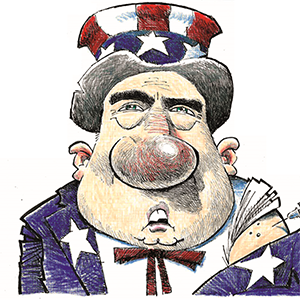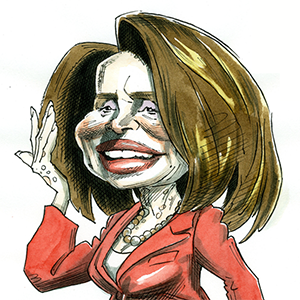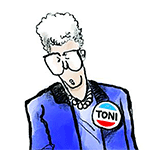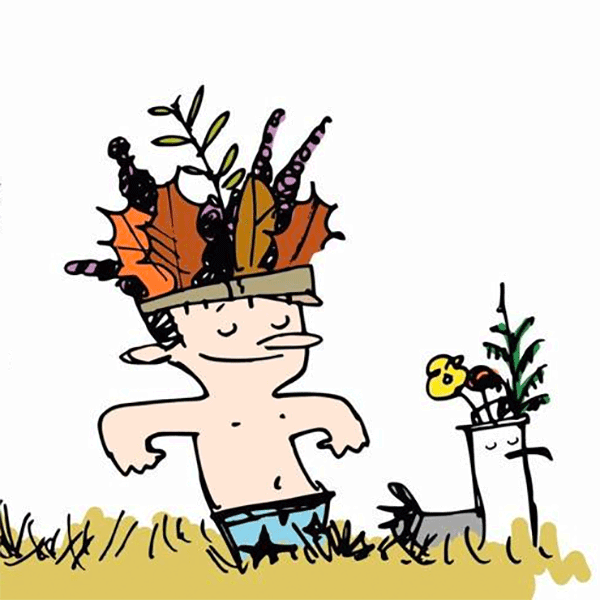The ‘bystander effect’ is real – but research shows that when more people witness violence, it’s more likely someone will step up and intervene
Published in News & Features
The most powerful evidence for the prosecution at the trial of Derek Chauvin was a video showing the then-Minneapolis police officer pinning a pleading George Floyd to the ground by kneeling on his neck until he grew silent and then died.
On the witness stand, the teenager who captured the incident on her smartphone, 17-year-old Darnella Frazier, expressed regret for not doing more on the day of the crime.
As a professor whose major field of research is the application of psychology and game theory to ethics, I believe that Frazier’s regret about not physically intervening illuminates two major points: First, a witness to a troubling situation who is in a group may feel a lesser sense of personal responsibility than a single individual. Second, someone in a group of people who can see one another may nonetheless feel responsible to act.
The sense of diminished personal responsibility for people in a group has become known as the “bystander effect” – a phenomenon first described in the wake of a celebrated, infamous case.
In a 1964 front-page story headlined “37 Who Saw Murder Didn’t Call the Police; Apathy at Stabbing of Queens Woman Shocks Inspector,” The New York Times related the gruesome story of the middle-of-the-night sexual assault and murder of Kitty Genovese, a 28-year-old bartender, near her apartment building.
In recent years, academics and The New York Times itself have concluded that the report had significant errors – the number of witnesses was fewer than 37 and multiple people phoned the police.
Reflecting on the notorious case long before these errors were known, social psychologists Bibb Latane and John Darley wondered if it would be possible to study failure of bystanders to act in lab experiments.
In a 1970 book, Darley and Latane summarized that the chances of any one individual acting in a pro-social or helpful way is lower when responsibility is diffused among a number of people. Subsequent studies also confirmed that individuals are more likely to act when they feel they have the sole responsibility to do so.
The bystander effect has been reformulated by game theorists as the “volunteer’s dilemma.” In the volunteer’s dilemma, a person, or a group of people, will avoid discomfort if any one of them takes a pro-social action with a small cost, such as performing first aid or fixing a clogged drain.
Any one individual acting alone has good reason to take action – but if there is a crowd of, say, 20 people, the chance that they will do nothing and let someone else volunteer goes up.
In the case of George Floyd, the bystander effect was complicated by the power dynamics at play. Chauvin was an armed white police officer, and Frazier and the other bystanders were unarmed civilians who were mostly Black, like George Floyd himself. Given that, it is reasonable to ask whether Frazier, if she had been the sole civilian witness, would have gone beyond recording a video to physically intervene – such as trying to pull Chauvin off Floyd.
And it is also reasonable to ask whether she or any bystander should physically intervene in a situation where doing so might be extremely risky.
What needs to be explained in Frazier’s behavior – and that of a number of other witnesses who also recorded videos or called out to Chauvin to stop – is not why they didn’t take drastic, risky physical action, but why they did take the steps to record videos and yell for Chauvin to stop.
To explain their pro-social action, an advancing line of research on the behavior of witnesses to troubling scenes is helpful. That research suggests that having more witnesses increases rather than decreases the chance of intervention and that pro-social intervention by at least some in a group is the norm.
A 2008 analysis by social psychologist Daniel Stalder of previous studies found that although the bystander effect is real, larger group size increased the probability that at least one person in the group would make a pro-social intervention.
More recently, a 2019 article by psychologist Richard Philpot and four co-authors found that there is a greater chance that someone will act when there are larger numbers of witnesses to public conflicts. They also found that intervention is the norm: 90.7% of public conflicts featured one or more witnesses making a pro-social intervention, with an average of 3.8 witnesses intervening in each conflict.
Compared with earlier research, their study is particularly persuasive, as it relied not on lab studies, but on examining surveillance camera footage of actual public conflicts between civilians (not between police and civilians) taking place in crowded urban street settings. The research was conducted in three countries – South Africa, the Netherlands and the United Kingdom.
As Philpot and his co-authors put it, in a line that presages what Frazier and several others near her did: “We found that in nine-out-of-10 conflicts, at least one person – but typically several – did something to help.”
In trying to understand bystander ethics, the troubling phenomenon of diffusion of responsibility remains relevant. But it is also important to understand the more positive finding that pro-social intervention like Frazier’s by one or more people in groups who witness public conflicts is common.
This article was originally published in 2021.
This article is republished from The Conversation, a nonprofit, independent news organization bringing you facts and trustworthy analysis to help you make sense of our complex world. It was written by: Wayne Eastman, Rutgers University
Read more:
Police officers accused of brutal violence often have a history of complaints by citizens
Derek Chauvin trial: 3 questions America needs to ask about seeking racial justice in a court of law
Derek Chauvin trial begins in George Floyd murder case: 5 essential reads on police violence against Black men
Wayne Eastman does not work for, consult, own shares in or receive funding from any company or organization that would benefit from this article, and has disclosed no relevant affiliations beyond their academic appointment.











Comments